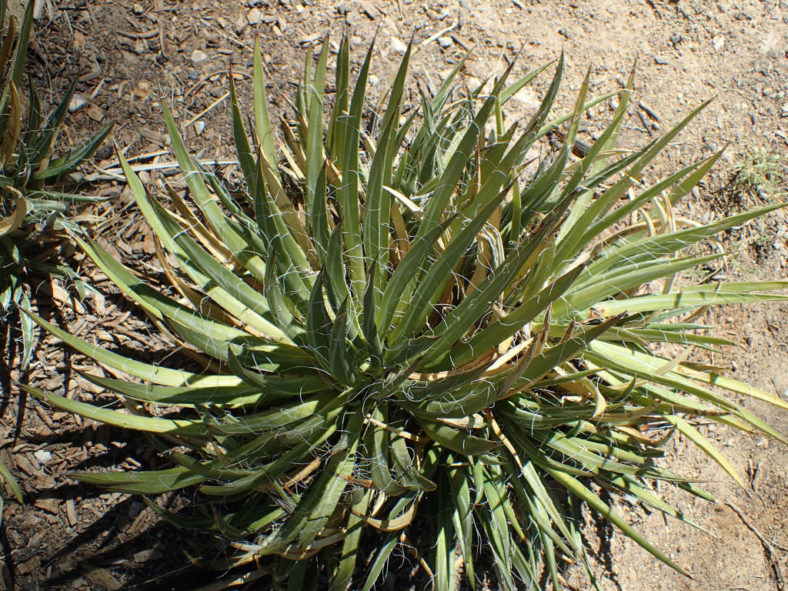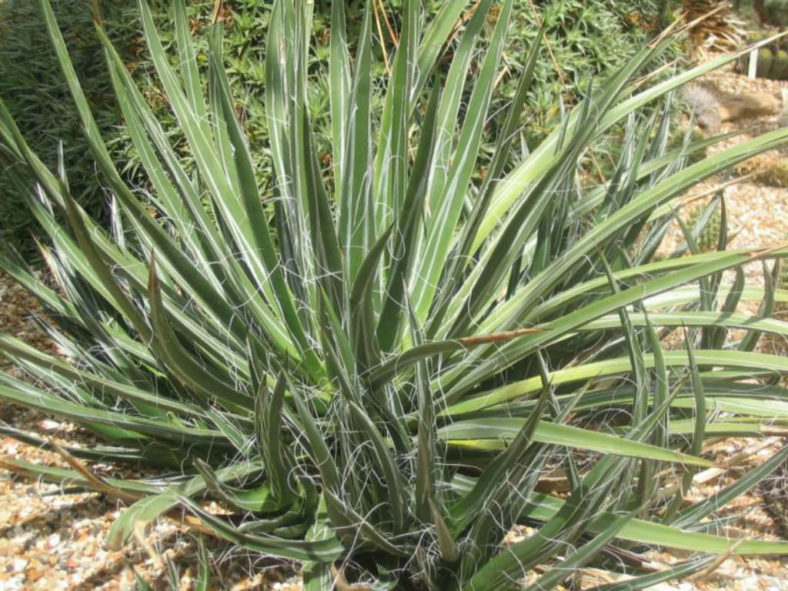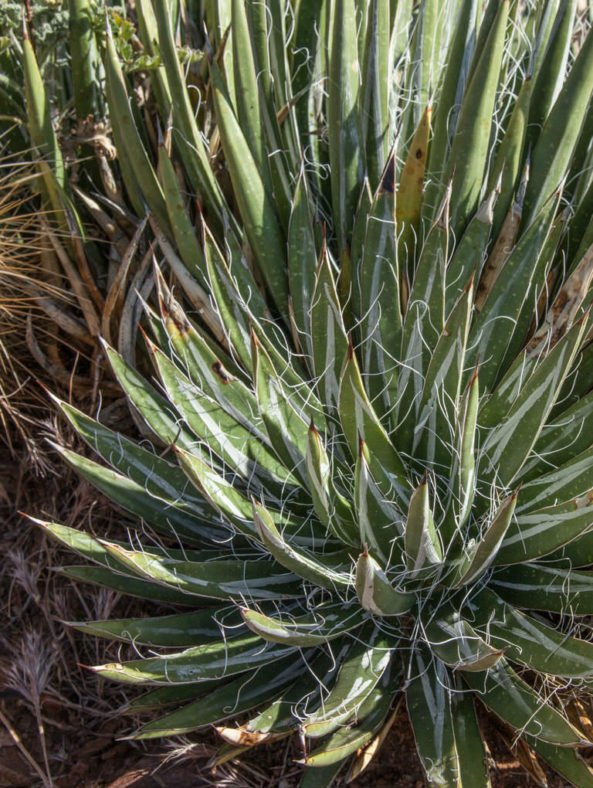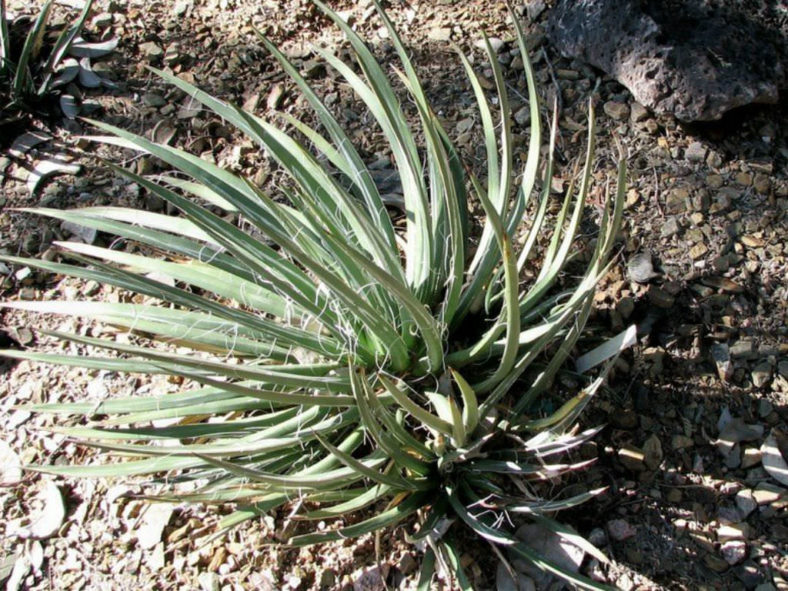Scientific Name
Agave toumeyana Trel.
Common Name(s)
Toumey's Agave, Toumey's Century Plant
Synonym(s)
Agave toumeyana var. toumeyana
Scientific Classification
Family: Asparagaceae
Subfamily: Agavoideae
Genus: Agave
Etymology
The specific epithet "toumeyana (too-mee-AY-na)" honors James William Toumey (1865-1932), an American botanist, explorer, writer, and educator.
Origin
Agave toumeyana is native to the United States (central Arizona).
Description
Agave toumeyana is a succulent plant that forms rosettes of 40 to 70 green to yellowish-green leaves with white bud prints on both surfaces. It freely offsets, forming dense clumps of rosettes. The rosettes can reach up to 20 inches (50 cm) in height and 2 feet (60 cm) in diameter. The leaves are ascending to erect, with curly white fibers along the margins and a terminal brown to grayish spine, measuring up to 18 inches (45 cm) long and 1 inch (2.5 cm) wide.
From late spring to early summer, the mature rosettes send a stalk that bears greenish-white flowers. The flower stalk can grow up to 10 feet (3 m) tall.

How to Grow and Care for Agave toumeyana
Light: These plants require full sun to part shade. If you are growing Agaves indoors, choose a bright, sunny window with as much sun as possible. Agave plants love going outside from spring to fall.
Soil: Agaves will tolerate most soils as long as they have good drainage but prefer sandy or rocky soil.
Hardiness: Agave toumeyana can withstand temperatures as low as 10 to 30 °F (-12.2 to -1.1 °C), USDA hardiness zones 8a to 9b.
Watering: Mature plants are very drought tolerant. From spring to fall, water thoroughly your Agave when the soil mix becomes dry. In winter, water sparingly about once a month. Plants in containers require more frequent watering than those in the ground.
Fertilizing: Give your Agaves a small amount of fertilizer in the spring during the first two years.
Repotting: When the pot becomes full of roots, it has become pot-bound. If you notice your Agave becoming pot-bound, repot it with new soil in a slightly larger pot than the old one.
Propagation: Since it can take years to produce seeds, Agaves are usually propagated by offsets.
Learn more at How to Grow and Care for Agave.
Toxicity of Agave toumeyana
Agave toumeyana is not toxic to humans but may be mildly poisonous to children and pets.
Links
- Back to genus Agave
- Succupedia: Browse succulents by Scientific Name, Common Name, Genus, Family, USDA Hardiness Zone, Origin, or cacti by Genus
Photo Gallery
Click on a photo to see a larger version.


